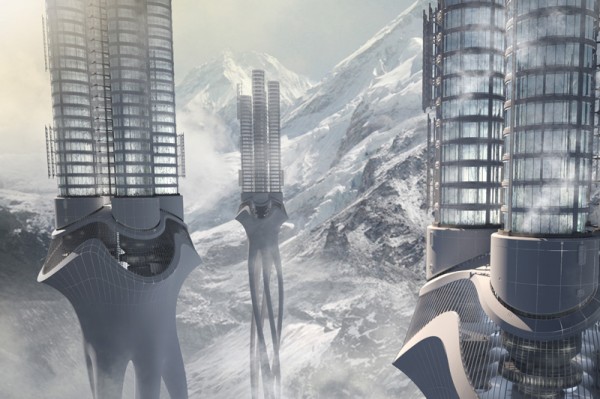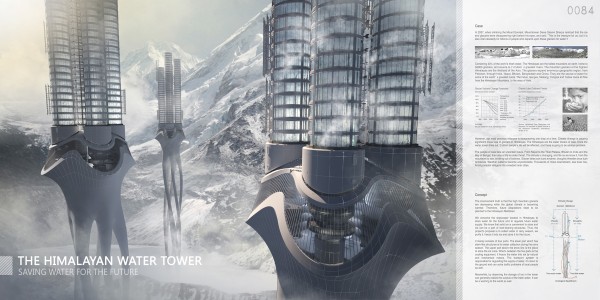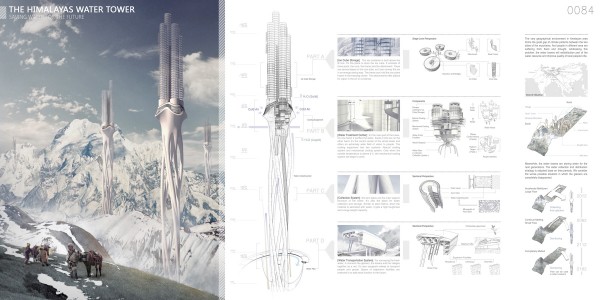First Place
2012 Skyscraper Competition
Zhi Zheng, Hongchuan Zhao, Dongbai Song
China
Housed within 55,000 glaciers in the Himalaya Mountains sits 40 percent of the world’s fresh water. The massive ice sheets are melting at a faster-than-ever pace due to climate change, posing possible dire consequences for the continent of Asia and the entire world stand, and especially for the villages and cities that sit on the seven rivers that come are fed from the Himalayas’ runoff as they respond with erratic flooding or drought.
The “Himalaya Water Tower” is a skyscraper located high in the mountain range that serves to store water and helps regulate its dispersal to the land below as the mountains’ natural supplies dry up. The skyscraper, which can be replicated en masse, will collect water in the rainy season, purify it, freeze it into ice and store it for future use. The water distribution schedule will evolve with the needs of residents below; while it can be used to help in times of current drought, it’s also meant to store plentiful water for future generations.
The lower part of the Himalaya Water tower is comprised of six stem-like pipes that curve and wind together and collect and store water. Like the stem of a plant, these pipes grow strong as they absorb their maximum water capacity. In each of the six stems, a core tube is flanked by levels and levels of cells, which hold the water. The upper part of the building – the part that is visible above the snow line – is used for frozen storage. Four massive cores support steel cylindrical frames that, like the stems below, hold levels that radiate out, creating four steel tubes filled with ice. In between the two sections are mechanical systems that help freeze the water when the climatic conditions aren’t able to do so, purify the water and regulate the distribution of water and ice throughout the structure.
At the bottom of the structure, surrounding the six intertwined water tubes is a transport system that regulates fresh water distribution to the towns and cities below. The curving channels connect the mountains to the villages, and are also hold within them a railway for the transport of people and goods.

















